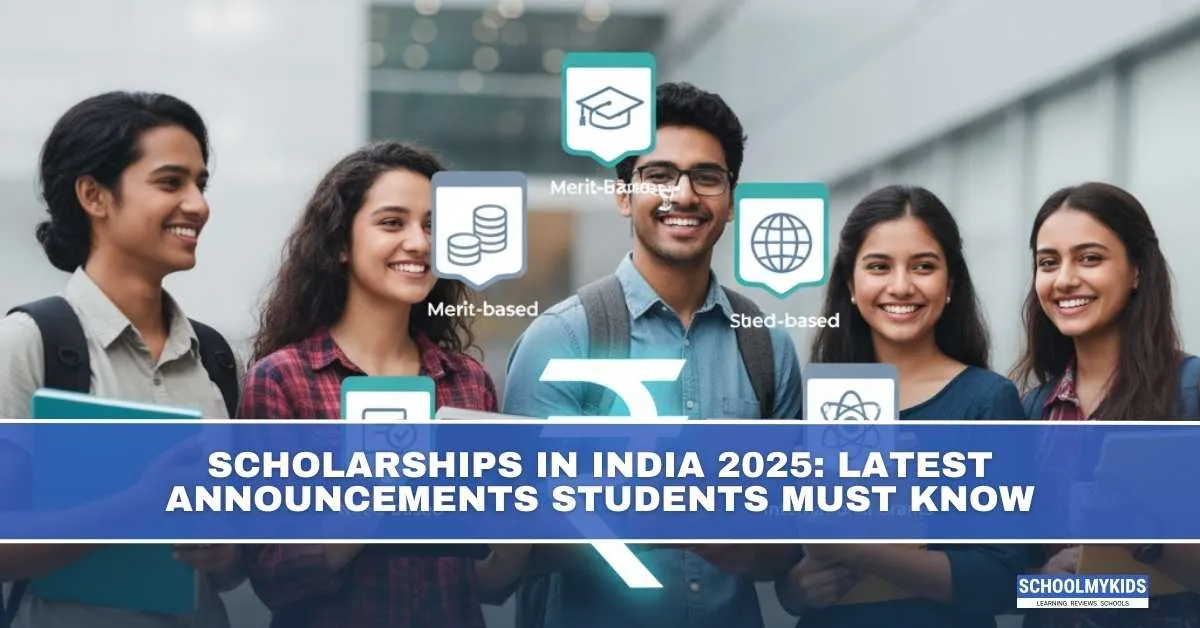For millions of Indian students, the dream of higher education is often threatened by financial barriers. Scholarships bridge that gap, offering talented and deserving learners the chance to pursue studies without being weighed down by costs. In 2025, the landscape of scholarships in India has evolved with new schemes, digital application systems, and bigger opportunities. Here’s a detailed look at the latest announcements students need to know this year.
Why Scholarships Matter More in 2025
- Rising Education Costs: Tuition and living expenses continue to climb, especially in private and professional colleges.
- Expanding Access: More first-generation learners and students from rural backgrounds are entering higher education.
- Policy Push: Government and private bodies are aligning scholarships with India’s skill development and digital education goals.
Simply put, scholarships aren’t just financial support—they’re tools for equity and empowerment.
Key Government Announcements
1. National Scholarship Portal (NSP) Upgrades
The NSP has rolled out a revamped digital interface in 2025, making it easier to track applications, deadlines, and disbursements. Real-time status updates reduce the uncertainty students once faced.
2. STEM-Focused Awards
The Government of India has launched targeted scholarships for STEM disciplines, particularly AI, robotics, and renewable energy. These align with national employment trends and global demand.
3. Increased Fellowships for Research
PhD and post-doctoral students now benefit from enhanced fellowship amounts, reducing the need for part-time work during research. Priority is being given to projects in climate science, health tech, and rural development.
4. State-Level Initiatives
States like Karnataka, Maharashtra, and Tamil Nadu have announced their own scholarship programs, some linked to their regional skill development policies. Many of these now integrate directly with the NSP portal.
Private and Corporate Scholarships
It’s not just the government stepping in. Corporates and NGOs are increasing their role in funding education:
- CSR-Funded Scholarships: Companies in IT, manufacturing, and finance are sponsoring rural and marginalized students.
- Merit-plus-Need Schemes: Scholarships are no longer based only on marks. Many new programs assess family income, extracurricular activities, and community impact.
- Women in STEM: Organizations have introduced targeted funds to encourage women into traditionally male-dominated fields like engineering and data science.
These initiatives reflect a larger trend of industry-academia collaboration.
Digital First: Easier Access for Students
A major shift in 2025 is the move towards digital-first scholarship processes:
- Unified Portals: Students apply to multiple scholarships using a single application form.
- AI Screening: Basic eligibility checks are automated, saving time and reducing rejection errors.
- Mobile Integration: Applications, document uploads, and updates can now be done entirely through mobile apps, a boon for rural students with limited computer access.
This digital transition means fewer lost documents and faster disbursement of funds.
Who Benefits the Most in 2025?
- First-Generation Learners: Special scholarships ensure financial support for students whose parents never attended higher education.
- Rural and Tribal Students: Expanded outreach programs target underserved areas.
- Research Scholars: Enhanced fellowships mean stronger support for India’s push in innovation.
- Women and Minorities: New schemes prioritize diversity and inclusion, particularly in STEM and entrepreneurship.
Tips for Students Applying in 2025
- Track Deadlines Closely: Many scholarships follow academic calendars but have varying cut-off dates.
- Prepare Digital Copies: Keep certificates, income proofs, and identification ready for upload.
- Check Eligibility Twice: AI tools help filter, but final responsibility is on the student to ensure eligibility.
- Look Beyond National Schemes: University-level and private scholarships often have less competition.
- Use Scholarship Aggregator Apps: These apps notify you when a new scheme matches your profile.
Challenges That Remain
- Awareness Gap: Despite digital portals, many rural students still don’t know about scholarships.
- Application Complexity: Multiple requirements (essays, recommendation letters) discourage applicants.
- Delayed Payments: Though reduced, some disbursement delays continue, affecting students financially mid-semester.
Addressing these challenges requires continuous collaboration between the government, institutions, and NGOs.
The Bigger Picture
Scholarships in 2025 are not just about paying fees—they’re about building a more skilled and inclusive India. By linking scholarships to emerging fields like AI and sustainability, India is ensuring its students are not only educated but also future-ready.
For students, these opportunities mean freedom from financial stress and the ability to focus on learning. For society, they mean harnessing talent that would otherwise be lost.
Conclusion
The latest announcements for scholarships in India in 2025 reflect a future-oriented, inclusive approach. With bigger funding, smoother digital processes, and focus areas like STEM and women’s education, the landscape is more accessible than ever. Students who stay informed and proactive can unlock opportunities that go far beyond tuition fees—scholarships are now a gateway to empowerment, innovation, and global readiness.









26 Oct 2025
Laptop